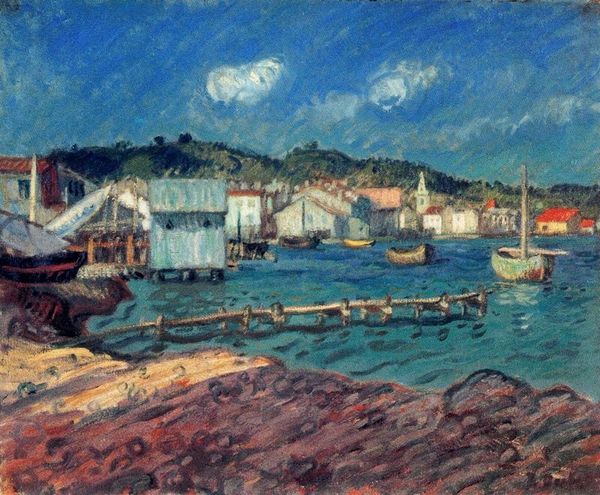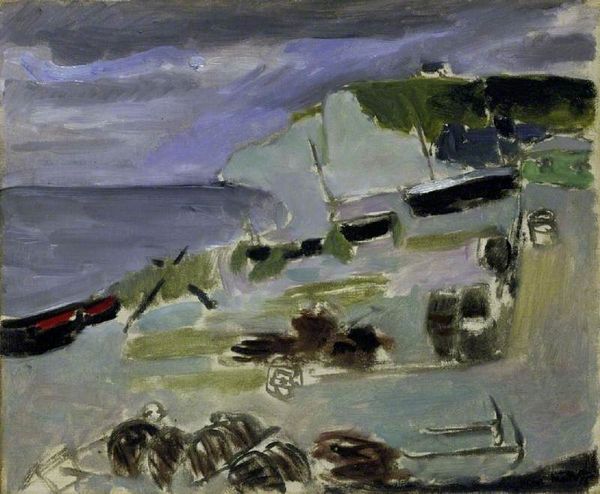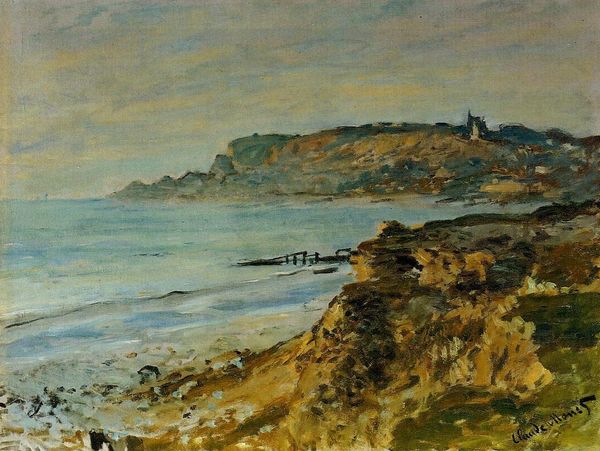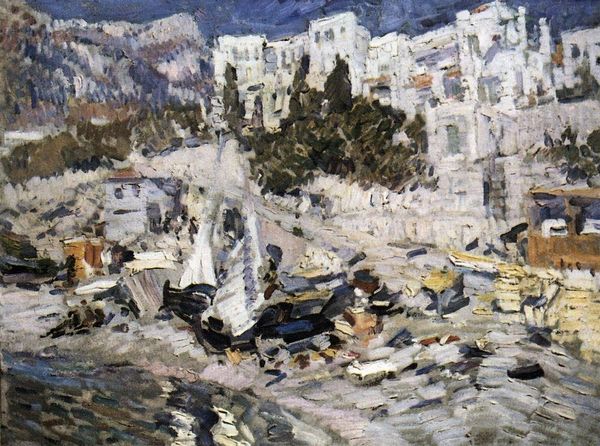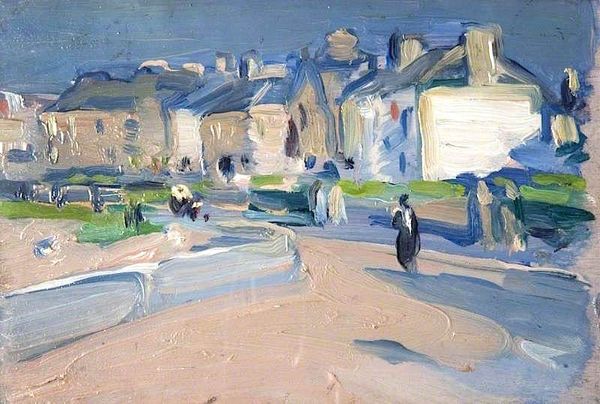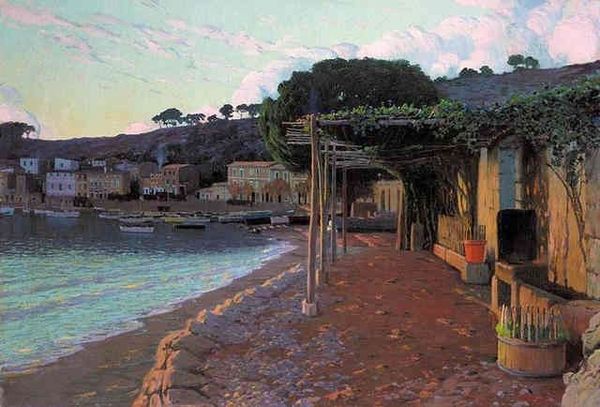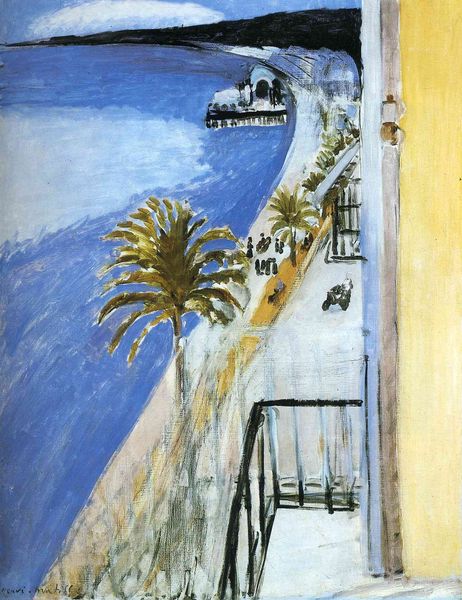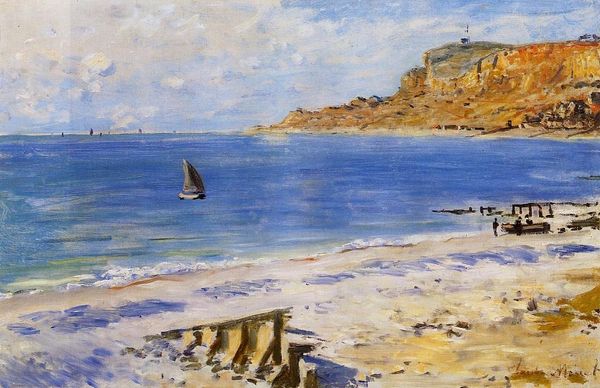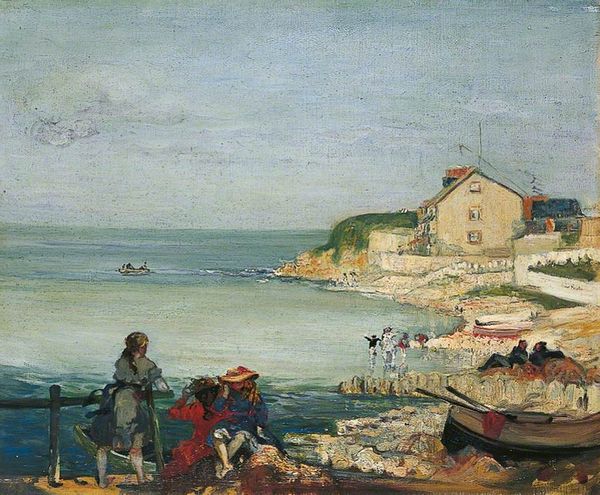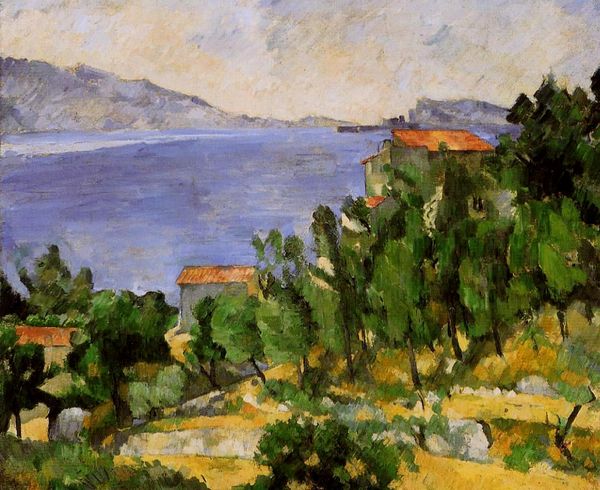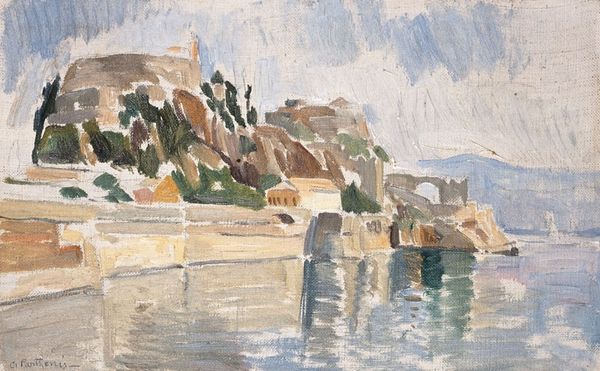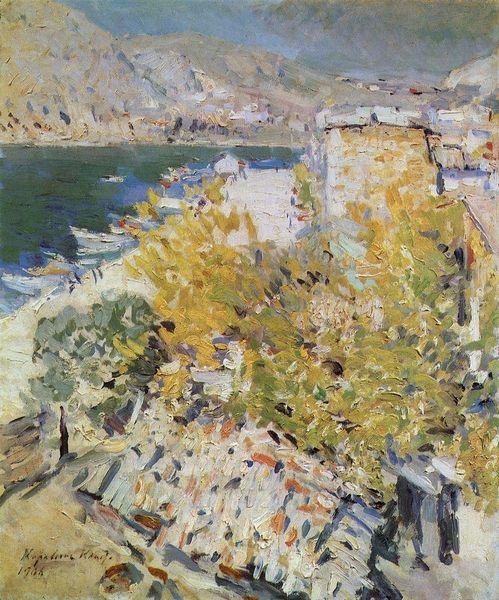
Copyright: Public domain US
Curator: Immediately, the starkness hits me. The sky is a flat, almost oppressive blue, dominating everything. It feels less inviting than you'd expect from a Mediterranean scene. Editor: Indeed. What we're seeing here is Henri Matisse's "La Promenade des Anglais," painted around 1917. It’s a striking example of his post-Impressionist explorations. Notice the visible brushstrokes in the plein-air technique. Curator: It's interesting how he’s rendered the figures – or rather, the suggestions of figures. They’re just blobs of paint, anonymous and somewhat lost against the landscape. Are they observers or are they part of a different narrative about tourism and public spaces during that era? Editor: I see the people and think about the political climate of France during the Great War. Though Nice wasn’t on the front lines, the anxieties of the time likely seeped into even the brightest landscapes. Was the 'Promenade' itself meant for leisure or became more complicated by the socioeconomic changes caused by war? Curator: Perhaps that somber mood isn’t so surprising, given the historical backdrop. The title speaks to leisure, but there is also a flatness to the scene and its activity; Matisse offers a visual record of people traversing public space during complex times, a space also occupied with collective anxiety about ongoing conflicts. Editor: The flattening effect that Matisse often uses really puts a sense of ambiguity to that feeling of being in public, where privacy is invaded, where one is seen but not engaged. The thick applications of oil-paint create such depth of colors, yet depth is reduced and space seems compacted by its textures. Curator: Yes. It disrupts that ideal of cheerful bourgeois life along the Riviera. Even the light feels heavy, lacking that crisp, sun-drenched quality we associate with the south of France. We get a raw emotional expression layered into this landscape through those painting choices. Editor: Absolutely, it's a perfect example of how context can profoundly shape our perception of art. We’re given a vision, via Matisse, that speaks volumes about the period. Curator: It makes you reconsider those stereotypical notions of leisure, reminding us that even postcard views can carry the weight of history and a visual statement on that climate.
Comments
No comments
Be the first to comment and join the conversation on the ultimate creative platform.


